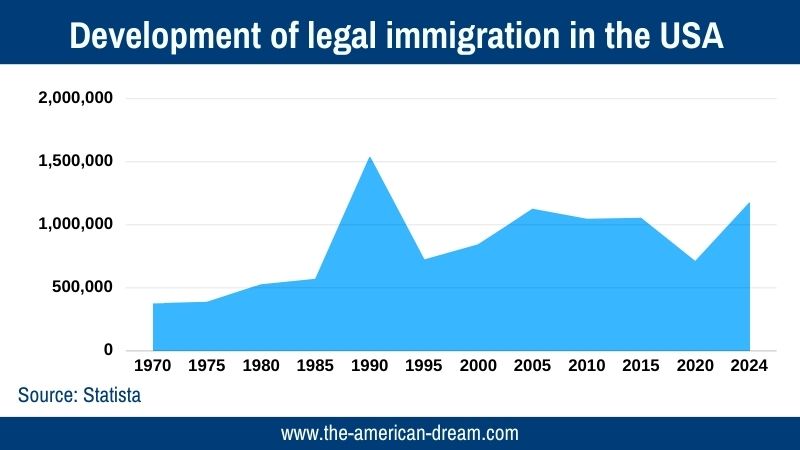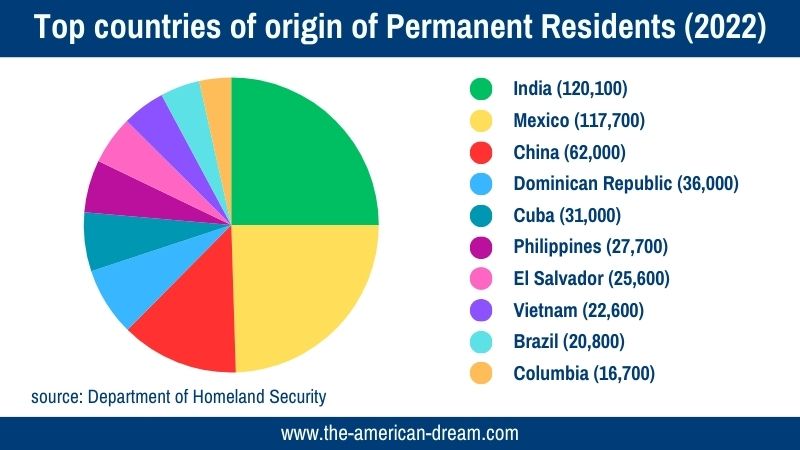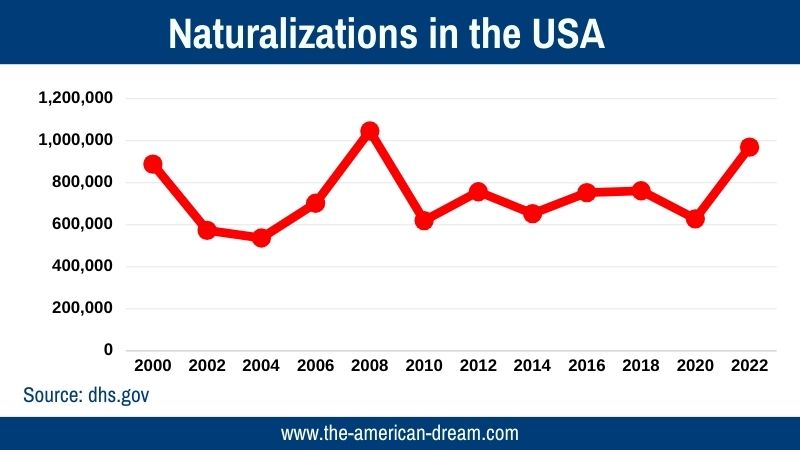Green Card Statistics
Traditionally a country of immigration, the USA has been attracting people from all over the world for more than 200 years. Although the immigrant boom is still going strong, many things have changed over time. Let’s take a look at some interesting US immigration and Green Card statistics.
Take the chance of living in the USA and apply for the official US Green Card Lottery!
Green Card statistics now and then
A huge economy with innovative industries, diversified regions and landscapes, glittering metropolitan areas, and the appeal of the unique "American way of life" – it's not surprising that the immigration and Green Card statistics show that America remains a popular destination for Green Card seekers from all over the world.
According to the latest data from the US Census, more than 45.3 million immigrants (i.e. people who did not have US citizenship at birth) are living in the United States in 2024. This corresponds to around 13.7% of the total population – a record high since the introduction of the Census.
Historical development of US immigration
When the Census was introduced in 1850, the population share of residents born outside the United States amounted to 2.2 million people. That number represented about 10 % of the total population at the time.
Until the 1920s, there was strong immigration, mainly from Europe. Yet, in the context of the Great Depression and World War II, a sharp decline in new arrivals occurred in the following decades. Restrictive immigration laws also made it very difficult for non-Europeans to immigrate to the US from the 1920s.
The proportion of the population not born in the United States declined steadily, reaching a record low of 9.6 million immigrants, or 4.7 % of the people.
However, since the 1970s, the number of immigrants has increased rapidly again, mainly due to massive influxes from Latin America and Asia. The shift was initiated by important changes in US immigration law (Immigration and Nationality Act of 1965, Refugee Act of 1980, and the granting of preferential treatment to Cuban immigrants during the Cold War).

Recent Green Card statistics
The U.S. Citizenship and Immigration Services (USCIS) receives approximately six million applications for Green Cards every year. About one million people receive a Green Card each year. During the coronavirus pandemic in 2020, the number of immigrants briefly fell below one million, but has risen more sharply again since 2022.
Origin of Green Card holders
In the 21st century, the composition of US immigrants has shifted significantly in terms of their countries of origin. While previously Green Card holders were primarily from Europe, today, immigrants from India, China, Mexico, and other parts of Latin America are at the top of these Green Card statistics.
The following chart shows the ten largest immigrant groups in 2022:

Broken down by country of origin, Indians made up the largest share of all US immigrants in 2022. This is followed by immigrants from Mexico and China (including Hong Kong and Macau, but excluding Taiwan). Other important countries of origin are the Dominican Republic, Cuba, the Philippines, El Salvador, Vietnam, Brazil, and Colombia.
Top destinations of Green Card holders
The United States is a gigantic and diverse country, and therefore it is not so easy to decide on a specific place or region to settle down. So what places are new Green Card holders most drawn to?
In terms of total population, these ten US states currently have the highest proportion of foreign-born residents:
- California (26.5 %)
- New Jersey (23.2 %)
- New York (22.6 %)
- Florida (21.1 %)
- Nevada (19.1%)
- Hawaii (18.0 %)
- Massachusetts (17.6 %)
- Texas (17.1 %)
- Maryland (15.7 %)
- Connecticut (15.0 %)
From Green Card holder to US citizen
In many cases, Green Card holders who have moved their center of life to America become US citizens. According to the USCIS, around 878,500 Green Card holders were naturalized as American citizens in 2023. Most naturalizations took place in the US states of California (154,900), Texas (99,900) and Florida (94,100).


de.statista.com, migrationpolicy.org

 DE
DE EN
EN ES
ES FR
FR IT
IT PL
PL TR
TR UA
UA